Blog disclaimer: Although I did not pay for this filter, I was sent it for review, I have not been paid by Mosaic Engineering for this test nor do I receive any affiliate from them through sales.
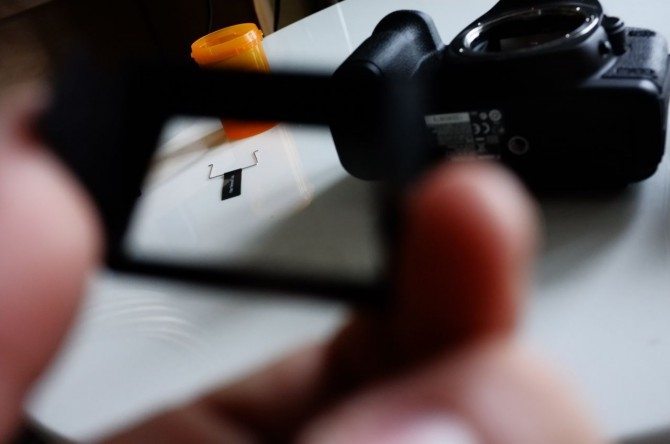
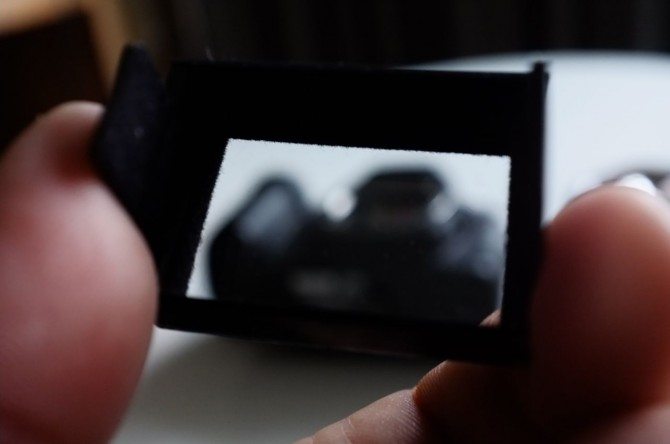
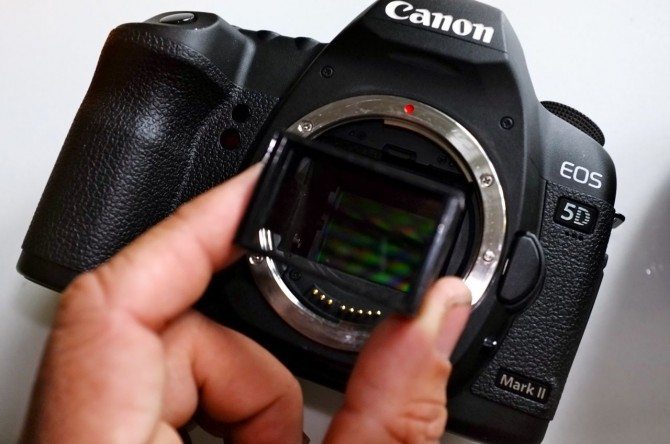
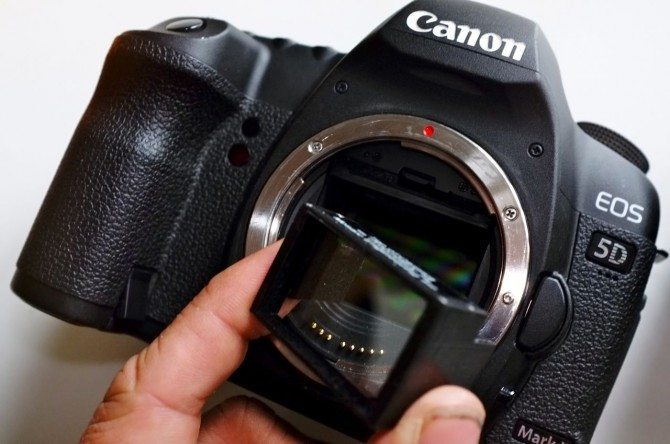
EDIT: I have finally done my tests. It is in the form of a rather long video but it’s the best way to see how well it copes. Below the video are the key plusses and minuses.
Mosaic Engineering 5DmkII anti moitr/ aliasing filter test and review from Philip Bloom on Vimeo.
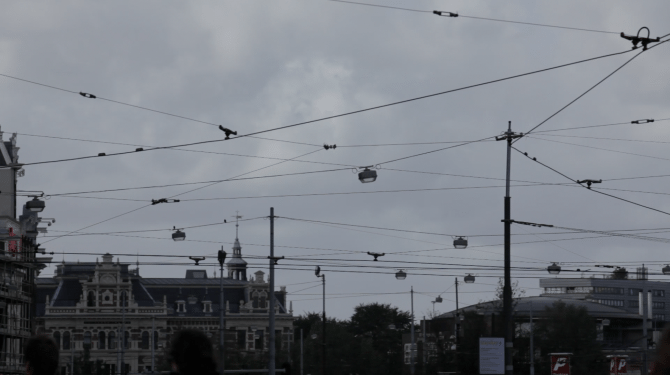

Be very careful with old Nikon lenses like the one below. It has a piece of metal, which was needed for film cameras, not needed any more that can hook onto the filter. If you want to use these lenses with the filter, remove the bit of metal.
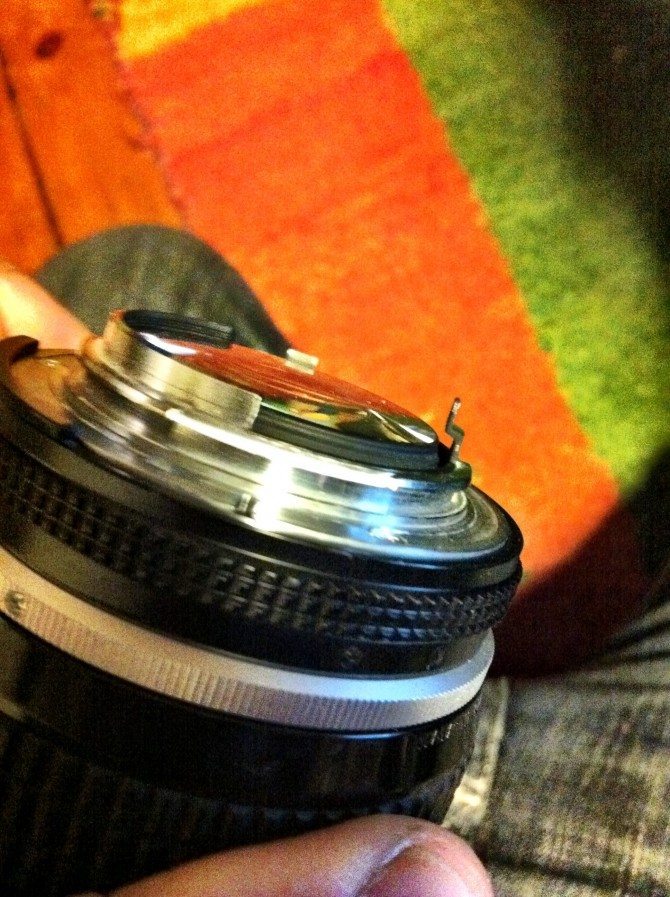
PLUSSES: Removes most of the visible moire, only the most stubborn stuff it cannot remove. Big success on aliasing. A massive improvement on image quality for video compared to shooting without it.
NEGATIVES; Not good with wide angle lenses. Some lenses work better with it than others. Not parfocal. Slight image softening. Close up focus changed. Be careful with old Nikon lenses with the bit of metal that sticks out. It can damage your filter and if you are not careful like me…your camera too!
SUMMARY: Well worth it! I wish it had came out 2 years ago!
PREVIOUS BLOG
I don’t normally do charts but I was at CVP today so I made use of the test room and knocked off some stuff. Here are two charts. One tests colour the other shows the improvement in moire and aliasing.
Colour shift? Image one is with filter out and image two is filter in…
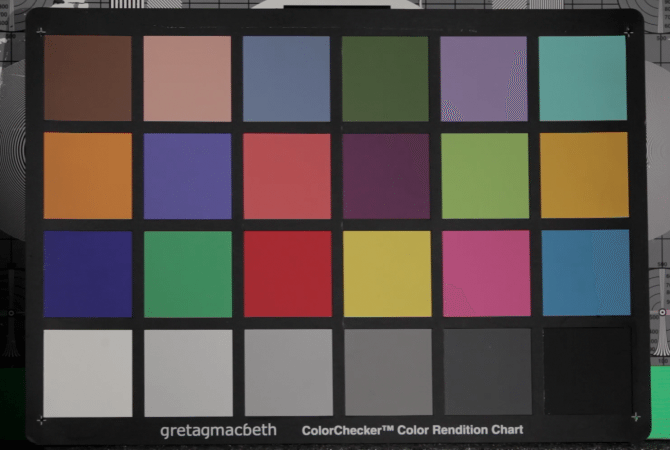
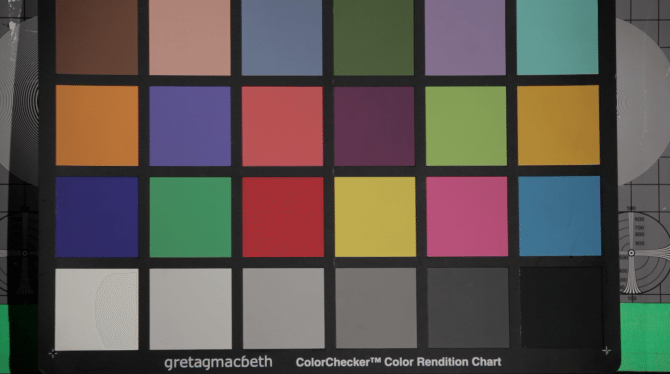
Image one is filter out at 135mm on 70-200 F2.8 at f4. Image two is same lens
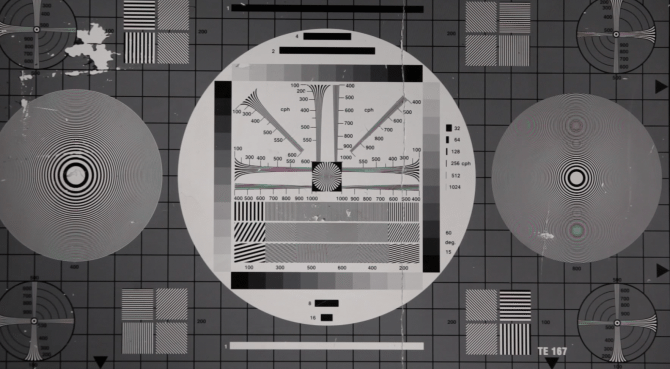
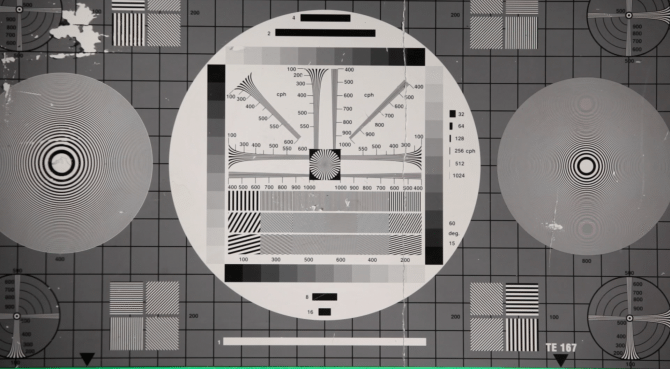
A few months ago I got to test out an anti-aliasing/ moire filter designed and made by Dave Cubanski of Mosaic Engineering. The VAF-5D2. I am sure all of you who have shot with a DSLR know exactly what moire and aliasing are. It’s the bane of shooting with DSLRs and the single biggest problem, much more than rolling shutter or sound. It’s all down to the way the camera downscales the image from its huge 21MP sensor to the much smaller 1920×1080 size of around 2MP. Line skipping, throwing away lines of information.
Below are the photos from March when I tested it out.
This line skipping causes these issues on fine fabrics, hair, bricks, water, lines. Especially when shooting with deeper depth of field. Shallow depth of field hides much of this but we can’t shoot like that the whole time. I have tried many solutions. Zeiss Softar filters, plug ins (only one that works well is the Marvels Moire one but all that fixes is the colour issues, not the moire or anti-aliasing)
The filter fits between the lens and the sensor. It pops in and out very easily. This is not a destructive fix. You put it in when shooting video (take it out when shooting stills as it lessens the quality of the stills) and as long as your lens is not wider than 24mm you will get more or less a moire and anti-aliasing free image…and it works.
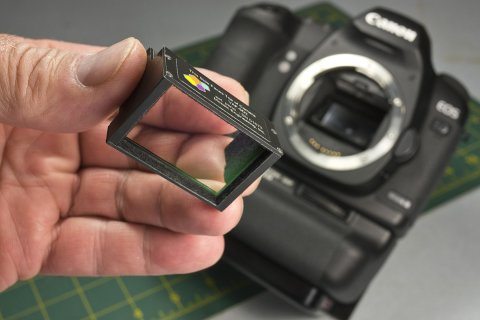
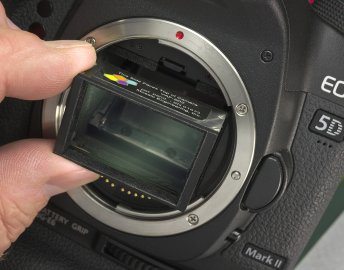
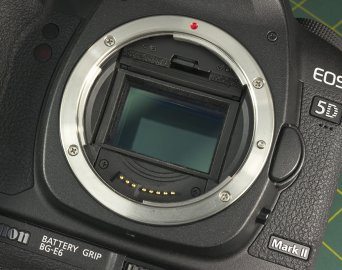
When I tested it at 50mm and above it was perfect, 35mm was ok. At 24mm I had soft edges. Below is the test video I shot at 24mm on the 5DmkII. You can see the moire patterning of the carpet gone even when I turn the sharpness up to +4. I also showed how the Marvels DSLR moire post filter coped with it compared to the optical filter. As you can see the edges are soft at 24mm. This has now been fixed, so I can now talk about it!
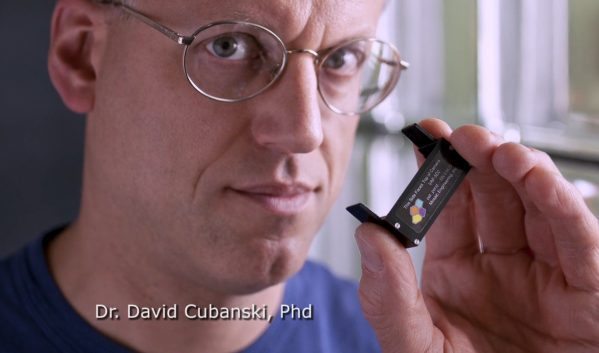
The VAF 5D2 filter consists of multiple layers of birefringent optical material including lithium niobate and crystalline quartz. How it exactly works and what it exactly does, well you will have to ask the inventor about that! But roughly the interference with details that is caused by the line skipping is removed, changing the pattern of the incoming image so whole lines are not whole lines any more…or something like that!
Director/ Cinematographer Glen Przybowski has shot some videos showing examples of it and how to install it. He has been testing it with Mosaic Engineering over the past 9 months.
Price wise it’s going to be around $385. Not cheap, but then again it suddenly cures your camera or its biggest issue in video mode and with no sign of the 5DmkIII yet this will give your beautiful full frame Canon a new lease of life! It is not properly for sale yet. A small test batch has been made. Then it will go into full production.
There is a 1/8th stop of light loss and the flange distance is altered, meaning the focus measurements on the lens are no longer accurate. Also the minimum focal distance is a tiny bit longer but infinity is reachable which is key. Changing focal lengths on a zoom lens will mean refocusing every time too.
An APS-C version for the 7D is being worked on now. I don’t know it that will be usable in say a 60D, but I will find out soon.
I am hoping to get a production version soon to test out. As soon as I do, I will do a full series of tests, with and without. I am very curious to see how well it works at different f-stops. In the meantime check out Glen’s videos including two commercial spots he shot with the filter in.
You know one day, maybe 20 years down the line we will be downloading plug ins for our edit systems to emulate that much missed moire and anti-aliasing look of old…like we do now for Super 8…actually we probably won’t…the sooner it’s gone the better!!!
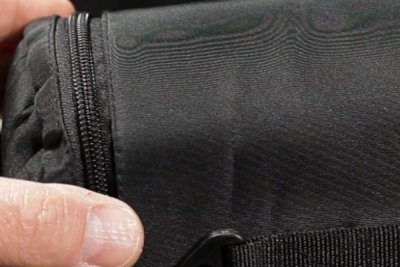
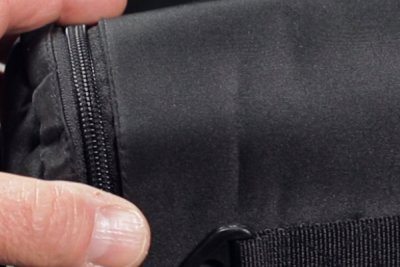





220 comments
Does this work for Canon EOS 7D ?
i thoroughly recommending reading the post fully as it talks about the 7D!!
Mind Blown… I gotta get a 5DMKII now.. this sold me…
This is great, except all the new cameras are coming out soon from Sony, Nikon and maybe even…. gasp… Canon. So the Moire issue probably won’t be an issue anymore. Wish it came out 2 years ago or so.
we will have to wait and see if any of the new cameras fix this issue. Don’t forget there are a lot of 5DmkIIs, 7Ds etc out there that need this!
I hope the new 5DMK whatever fixes this.. then 5D MKII’s will be cheaper!
Read… Read…. Read….
99.9999% of your questions would be answered if you’d just READ.
Hi Philip,
nice to read about tihs !
My feeling is that this filter produces smoother images, with less detail, and suggests that, as the inventor wrote on the site, it becomes necessary to add sharpness in postproduction (which is not good for me).
It’s worth losing sharpness to remove moire? Or rather that is “always” worth it?
Thanks
Lenskiller
i think he meant you can add sharpness without exaggerating aliasing etc. When I did my tests I didn’t find the images softer.
Thank you very much for this answer
From looking at the footage it seems sharp to me too, but the Caprock filter makes the image a lot softer.
http://www.caprockdev.com/antimoire.htm
The DP of house said that H.264 has its benefits of having a soft image. He says makeup people hate sharp cameras because it shows every small detail in a persons face.
I know you can soften a image in post but for people that want a soft image to begin with Canon has what you need. Fixing every clip in post is a pain.
The Great Camera Shootout Part 2: Sensors & Sensitivity….Check it out and my thoughts…
By Philip Bloom
http://philipbloom.net/2011/07/27/shootout2001part2/
Maybe it would be interesting to see how reacts the 5D if you increase slightly the sharpness on the preset to obtain the same result. Especially if you use it on sharpness none usually.
Sold! Im getting one as soon as they become available,
I wouldnt hold my breath for a 5d III for at least a year,
Reason enough why video cameras should stick to video and still cameras stick to stills. I think shooting video with an SLR is ludicrous. You cannot possibly be superb at both with one body and there will always be shortcomings. Personally I think they dumb down the SLR by integrating video with it. I won’t own an SLR that has video, I can say this with 100% assurance than I would never use it even if I shot video. Every professional I know says the same thing. Now what WOULD make sense, is if Canon or Nikon (or Sony or whoever) would offer a Video Camera body for existing SLR lenses – not one that looked like an SLR, but one in a form factor more conducive to shooting video. That, I would buy.
Thanks for your thoughts but you clearly have never shot with the 5DmkII so don’t understand how incredible a creative and affordable avenue it opens.
Yes we have had to deal with the shortcomings since the camera came out. But the positives outweigh the negatives many times over.
You also do realise that the current video cameras that have large chips in, the FS100, AF101, F3 have atrocious form factors? Worse than DSLRs!!
There’s still trolling in 2011? Odd, this.
Anyway, thanks for this Philip. It’s keeping from thinking too far ahead about new gear and focus more on what I currently have/use. Any idea what the ETA is?
Cheers!
Eric
trolls will never die!!
the story is, that the videofunction is implimented BECAUSE the professional broadcastingindustrie asked for it!
the purist photographers use laica or film (with old or selfmade cameras)!
the dslr started a whole new era for independent filmmakers! a look has become possible, that outweigh any crazy codec or whatever (and if you want a realy good output, you realy needed to invest in external recorders even with a pro camcorder). if you don´t see that, it´s probably not to bad that you wont pick a dslr to shoot.
i think, that the videofunktion doesn´t harm the stillsfunktion. the issues are the same and the pressure rises to remove rolling shutter and noise. it will also better the focusproblems, but we will see that with generation 2, i guess. stillphotographers will praise the videofunktion for that!
and think about the millions of consumers – they get everything in one body for almost nothing.
“the FS100, AF101, F3 have atrocious form factors? Worse than DSLRs!!”
Philip, I think this deserves a new blog. Thanks
check out my blog post when i compare these cameras. i cover the form factor in it.
Oh please… that’s ridiculous. Tell that to the journalists that daily shoots video with their dSLRS, to the skateboard kids that now can pack lighter gear, to the amateur filmmakers that now has the ability to have a shorter depth of field and super sharp videos for a very low price…
…or why not tell it to the people behind House M.D. that shot an entire episode with the Canon 5D Mark II? Or to all the people in Hollywood that uses the 5D Mark II on a regular basis because it’s so small so they can easily mount it in cars and use multiple camera systems.
…or perhaps the people who love to fish but had to choose between bringing a still camera or a video camera?
It’s one of the most revolutionary advancements in digital cameras and you’re throwing it down the drain without even blinking.
Reason enough why video cameras should stick to video and still cameras stick to stills. I think shooting video with an SLR is ludicrous. You cannot possibly be superb at both with one body and there will always be shortcomings.
Hmm, probably this website is not the best outlet for you.
lolllllll
I agree with Philip, you must have never shot with one. The things creatively you can do with a DSLR camera are amazing. You should not knock it till you try it. Also, the Red Camera has a rolling shutter issue as well.
@ Why video cameras should stick to video and still cameras stick to stills. I think shooting video with an SLR is ludicrous.
well: do not believe me, search for your selve and come back when you found out;
a bigger chip than a professional f35 flagship of sony (thats super35mm)
a 5dmkii has the size of a vistaprint…..
less noise in darkness than video digital or harddisk based video camera’s
great lenses that fit to the 5dmkii how many? perhaps dozens instead of just a few
technicolor not a name thats unknown to many… has the great video lut… not for nikon … just for the 5dmkii
zeiss which stopped producing lenses for film for a wile arri who sold them under arri superspeeds has started production again …. great compact primes to fit the canon 5dmkii
great rigging from many suppliers such as zacuta and redrock….
well after 20 years of filming these are just a few things that come in mind…
spencer
Six, just a thought for ya.
All truth passes through three stages. First, it is ridiculed. Second, it is violently opposed. Third, it is accepted as being self-evident.
—
Arthur Schopenhauer, German philosopher (1788 – 1860)
While the world of video is in the last phase of being self-evident with the 5D Markii, I do believe sir you are still first phase of this with these cameras. I have never shot video professionally, but have been able to shoot some amazing video with this camera, and with the help of this blog.
Thanks for all your hard work with these cameras Philip, its been amazing learning so much.
Wow, this is awesome!
This is the best announcement for Canon since the mk2.
Six…how incredibly shortminded,
Every camera has a disadvantage no matter what you pay, DSLR has really opened up film making for alot of indie film makers. It can produce a wonderful image, and you dont have to take my word for that mate, They have shot episodes of ‘House’ as well as numerous other high budget productions (seen the Red Tails trailer yet?????)
It can produce such a wonderful image. We all wish we had Alexa cameras but you make do with the tools you have and make those tools work for you the best you can.
I have to say shooting with dslr has made me think so much more about what im shooting than alot of other cameras.
Form factor alone should convince you to try it.
Hope they released version for other DSLR such as: 550D/7D (canon APS-C cropped DSLR) and 4/3 system or NEX system (for VG-10). Is there any news of progress getting there?
Philip mentions right in the article that work is being done on the 7D version but is unsure about the 60D at the moment.
Preston, 7D version might be fixe to the 60D right?
i don’t know if the 60D version will be same as 7D.
The same to sensor is not everything for it it would also be necessary the same inside of the camera so that it fits perfectly..
not sure what you mean Pascal…
My English level is maybe not enough for what I can to explain… So that it works in both camera it is necessary that the dimensions inside the 60D, in front of the sensor, or similar to the 7D. So that the filter does not move and so that he can enter inside.. I don’t know if it’s more clear..
do you mean if it fits in a 7d it should fit in a 60D? dont know..hopefully!
Yes if the inside of the 60D is different from the inside of the 7d in this case we need two different filters… I don’t have the two camera to verify, and it could be difficult to measure them inside..
If the characteristics of the sensor are identical between the 60D and the 7D it seems logical that the same filter has to work… Except the problem of physical size of the filter. The photosites of the sensor of the 5D are bigger than on the 7D thus it is normal that filters should be different to work correctly..
To Six, lots of us LOVE shooting video with SLRs. I personally really like the form factor of DSLRs over traditional video and motion picture cameras. Plus, DSLRs have a huge range of lenses and incredible shallow DOF that you cannot get on most video cameras. The whole idea that you use a camera to shoot photos and camcorder for video is so dated and antiquated. Time to look into the future. Until the iPhone came along, people probably thought why would I need a phone to talk, text, check email, run apps and take pictures? Convergence.
As for “every professional who says this,” not sure who you are talking to but I work in Los Angeles in TV and tons of stuff (granted more low budget projects) are shot on DSLRs.
As for the 5D3 not coming out in a year, I personally think and from what I’ve read, it will be sooner but probably not soon enough! 🙁 Canon is quickly falling behind and with Sony set to release some new cameras at the end of month which is rumored to have amazing video, Canon needs to act really soon.
hi philip , what is the thing with 1280 x 720 crop of 1080 P mean i.e the subtitle in the last video clip . Does this filter work only in 720 p mode only ? – or it works in full hd mode (1920 x 1080P mode) as well?… a bit confused please clarify .. and thanks a ton for sharing !!!!!!!!!
no, he simply has cropped it to show us more clearly the effect. Don’t forget, there is no 720p mode on the 5DmkII!!
Well well well,very impressed.
Dr David is about to become a seriously rich man.
It will probably take months before your average “Fred” will be able to buy one of these.
On back order everywhere, endless waiting lists, Another 400 buck + 60 bucks post cost to europe.
Its allready a must have for DSLR shooter’s and its not even released.
Something for my Christmas stocking I hope.
Looking forward to your review Phillip.
Hey Phillip,
If you some how get your hands on several of these filters in the near future,
Can you bring me 1 over to the Amsterdam IBC Meet up, Save me some money on post costs.
Thanks mate.
@Soundmanneal
i just want to get hold of one right now!!
Oh
my
gawd.
I want one now!
What happens when a wider than 24mm lens is used? Such as a 20mm or 21mm..I’m assuming extremely soft edges. I’d love to see a test sequence with wider that 24mm lenses. Regardless, this is epic!
Thank’s great.
Thank you Philip to share this.
Little off-topic question: anybody know a book or a web resource that explain how to manage corrections to have the ‘tv spot’ look colors ? the kind of colors of the eat’npark ad above ?
I wonder what the measured resolution is with this filter installed. I wonder if it’s better than before.
I think this is the best fix for Canon 5D Mark 2 but this other filter might be the right tool for other lens.
http://www.caprockdev.com/antimoire.htm
7D Caprock 2.0 Anti Moire Filter, Aliasing Filter
http://vimeo.com/7523222
I really don’t agree with Six!
But don’t agree that the FS100 is atrocious. I think that’s a little strong. I own both a 5DMKII and an FS100 and like them both for very different reasons and applications.
Can’t we just all get along!? 😉
i think you misread what i said. i said the form factor is atrocious (not the camera) as are all the large chip camcorders. it needs a rig even more than the 5d does!
I think people thinking there going to get their hands on a 5d3 in feburary are getting fed some really bad info. (canon rumours website?)
Canon is in no rush to compete with other video dslrs. One thing people seem to always forget is that 95% of people that buy a 5d mark II are ‘photographers’ not indie film makers. The sale of these cameras to film makers is minute and not enough for them to rush it out in feburary to compete with any other video enabled dslr.
5d3 will not shoot raw video, will not be released in feburary (announcement at best in feburary) and will have a few extra features like a slightly better codec and 60 fps, but canon are aiming to make the best photographic camera, not make a camera that pleases the film makers enough to push the release forward.
There are video cameras made by canon, maybe they might release something to compete with fs100 or panasonic camera? but that wont be the 5d3….
sadly very true.
Very professional video demos. I like how they used the cheese grater idea but refined it to the point of perfection.
I still however can’t get over the fact that t looks so soft compared to the GH2. Frankly after using the Hacked GH2 on production material I cant say I’ll be excited about using my 7D on critical shoots even with this filter on.
However that doesn’t detract from the fact that this elevates the Canons to a higher place in documentary, commercial and narrative shoots. Two less things to worry about, Ive had many shots totally ruined by these artifacts on the 7D and paid with time and money to get a fix or re-shoot.
What’s the deal with the mirror? It seems its supported or blocked from closing with the adapter. Could this damage the mirror motor in some way?
Great product that will probably still be needed to some degree in the future Canon cam releases. I don’t see them curing Moire/Aliasing 100% on the next generation.
Mr. Bloom,
Any chance you could post a clip of you filming with a 17mm lens so we can see how “soft” it actually is? I like to go really wide with my Glidecam, and I’m not opposed to soft corners unless it is excessive and draws attention to itself.
if I had one…
seems to blur the corners of the image though
are you watching my original footage which i say was no good or the new test footage below?
So its the old birefringent optical material including lithium niobate and crystalline quartz trick. So I just pop that in behind the flux capacitor right? This looks so good I checked my calendar to make sure it wasn’t April
I think its totally worth the money considering the few very minor issues with it.
I hate the fact that shooting a short film on 5d effects what the actors wear and what the set design is.
But with this its freedom again 🙂
This is pretty huge. One of the reasons I switched to shooting mainly on the FS100 was the awful aliasing (and the audio). This filter seems to induce less edge to edge/corner sharpness, but not too bad. Certainly this is going to be a must-have next to the Zoom H4n! Wouldn’t surprise me a bit to see this tech bought by Canon and incorporated into new cameras.
H4n sucks so much ass. I can’t begin to say how much I hate it. I try not to rely on it much, but when I do, it always lets me down. A mic on the hot-shoe may not sound as good, but has saved me from the Zoom H4n perils many, many times.
Tascam DR100 SOOOOO much better!!
Second that, sent my H4N straight back to the shop. WAY too much pre-amp noise. Boom mics out of the question. Only ok if you have a big input signal, like a radio pack for example. Awful preamps! Shame, they look nice.
The H4N sounds downright useable when paired with a SoundDesign Mix-Pre 2 channel mixer as the pre-amp. Just make sure you go into the H4N through the phono plugs located inside the XLR plug on the bottom of the unit. This bypasses the H4N’s internal pre-amp (or seems to mostly bypass it) and relies on the superior Sound Devices pre-amp. Sounds great. You will still need to do some testing to find your optimum Record Level setting on the H4N. It will have a slight effect. I know this is getting pretty off topic but there are probably plenty of H4N users that haven’t figured this out yet. I spoke with someone at Sound Devices and was told the following about how to set audio levels on the Zoom with a MixPre:
1. Turn on 1KHZ tone on MixPre
2. Adjust H4N’s levels until tone reads at -16 (because tone on MixPre is at 0 and MixPre goes to +16 before clipping/distorting). This will insure that H4N will not clip before MisPre does. Don’t worry about numbers on meters. They are kind of arbitrary. Basically the H4N clips at 0 because that is as far as it will read. MixPre clips at +16 as that is as far as it reads.
3. Once H4N level is set, turn off 1KHZ tone on MixPre and adjust channel specific gain until signal is reading about +8. This should leave enough headroom in case of a change in volume. For more potentially dramatic shifts, set levels on MixPre lower.
Even though MixPre’s LED’s go into the red they will not clip until +16.
Make sure you test everything though and verify that it’s working for you. Good luck.
I meant to say “Sound Devices” MixPre. Sound Design would probably not sound so good.
My H4n tests tend to confirm this. If you use an ME 6x series mic with the phantom powered K6, then you have a hot output and this works better with the H4n than an dynamic mic for noise issues.
Really interesting. Looking at the demo videos, I can’t see any softening of the image from the original. But hard to see at web resolution. Is this really still as sharp with the filter installed? If so, this could be must for DLSR shooting. Thanks for sharing Philip, great find.
You can download the raw files:
http://www.przyborski.com/mosaic_downloads.html
Thanks for the raw image link. So looking closer at the images (resoultion chart) and taking 1080 stills, i do see a ‘slight’ softenting of the image with the filter in place. Also, seems to be a very slight colour shift from white. But to be honest, its pretty minor compaired to the gain you get by almost loosing the moire and aliasing completely. Very interesting product.
Six: good luck finding a stills camera that doesn’t shoot video in the near future. Guess you’ll be stuck with gear from 2008. Whether you use it or not, video on DSLRs is here to stay.
This is brilliant news! Can’t wait for a 7D version! ‘Six’ is a troll and a tool. Just ignore him.
I have a question, the mirror has to be opened all the time? What happens if I accidentally close the mirror?
You cant!
That could be risky, right? What if somebody accidentally presses the shutter button and the mirror flips? What would happen than? The mirror or the filter could be damaged?
the mirror can’t flip. it cannot go down
Yeah, this is a “game changer.” Especially if the 5Dm3 doesn’t fix aliasing.
REQUEST: When you run tests, please evaluate extreme wide angle performance.
One of my star performers these days is the thirty year old Nikkor 20mm f/3.5 AI-S. If this can work with a new, aliasing-free 5D Mark 2 — the world has changed.
Thanks!
So I am wondering, if Mosaic Engineering created an infrared/high pass filter, could you take out your built in infrared/high pass filter and switch from infrared to normal?
And actually, this would keep dust from getting to the sensor as well.
While this is cool and all. It doesn’t make the image any sharper does it? It just gets rid of moire right?
Will a 1080p landscape look just as sharp as a 1080p landscape shot from an HV30 or EX1 or something? Specifically wide shots of trees and such. The poor downscaling makes trees and such look blocky, will this make them look more natural/sharper, or just potentially get rid of any moire?
On my T2i (there goes all my credibility lol), I keep sharpness all the way down, and I haven’t ran into a shot where I’ve noticed any moire in a looooong time, not since I first got the camera actually. Moire doesn’t seem to be as big of a problem as aliasing or lack of sharpness.
No, it will not make the image sharper. it will just help with the moire. It will allow you to turn your sharpness up (a little bit) and not notice moire on clothing as much etc. When shooting landscapes, I haven’t really ran into moire issues very often, even with the sharpness turned up a little (outside of water shots as I almost always get moire if there is even a little bit of rippling…).
Much like color noise, it appears that moiré affects picture quality even when it doesn’t scream out at you. In the examples,e.g. the pouch, the clean version looks much better even in the parts where a casual glance might not have noted the moiré. I do think I will be buying this.
OMFG. thats awesome.
Fantastic product. Cannot wait to get one. But I am wondering if my Contax lenses will fit with the filter in place.
Hope you can check non Canon lenses when you get the filter Philip.
Thanks and greetings from Amsterdam.
Whoo that’s cool! THANKS.
Philip, can we see the VAF 5D2 at IBC 2011 Amsterdam ?
i hope so
Oke… we will see 🙂 Thanks for the reply
I agree with six, give me a real video camera any day and I don’t have to put up with the pain in the butt that it is to shoot with a DSLR.
then why are you reading this blog post?
mhh,
many people don´t understand why something is good. they just buy stuff because someone is hyping it. you realy need to know what you want. things don´t suit anyone. if you don´t want to have shallow dof and you don´t care about timelapse, if you don´t feel liberated by manual control and if you don´t want to shoot with natural light, a dslr might not be your thing… so don´t by it! that´s ok. art is freedom.
lol. Who said you have to use a DSLR in the first place? This is hilarious.
So many people feel threatened by DSLRs these days… I don’t get it. Use traditional camcorders for events/news and use DSLRs for narrative/creative films. Just because you personally cannot make cinematic images with a DSLR (most likely the root of your resentment) does not mean you get to annoy the rest of us by voicing your jaded opinions.
Thanks for this Phil. Great insight.
I shoot on the 1dmkiv and the 5dmkii. I love shooting full frame for my wide shots on a 16-35mm but on all other accounts my 1d significantly outperforms.
Love the fact that its seems to be so undiscovered because of its price but I’m all over the 1d. And you?
Any info on when something for the 1d might be available?
hi Peter,
to be honest the chances of one coming out for the 1dmkiv are very slim as there are so few out there being used for video…shame as the 1dmkiv is a great camera!
I avoided shooting some video projects on the 5D MKII for the very reasons that this filter fixes. It breaths new life into a classic camera so $385 seems like a reasonable price.
I’m not holding my breath for a 5D MK3 especially as I doubt moire and aliasing problems will be improved considering it may have a higher pixel count.
I really hope that when the 7d version comes out that it’ll work on my 550d!
waiting for JJ Abrams next film in 20 years “Moire”
Awesome! I hope they make one for the 7d as well.
Great post, Philip! Just the product we’ve all been waiting for…
So happy that this is soon to be released…hopefully by then I should have upgraded from my current 550D to the 5Dmk2…or even 5Dmk3! (we can dream!)
until then however, I will just have to continue shooting on my 550D and cope with aliasing/moire until further notice!
James, DP
http://www.youtube.com/franticfilmuk
Can’t wait for my 7D… another camera that doesn’t have moire problems is the Red Epic; when will you have an update for us on that cam, Philip?
what sort of update you after? P
Just what’s up… what you think so far… how you’ve equipped it… buying experience… that’s about it.
am still getting used to it. got a shoot at weekend with it. Once i have a shoot with it that i can blog about it with i will
OK thanks! Good luck on the shoot.
I’m waiting for the $15 Hong Kong version. I’ve done some googling on the material, And other than the mounting/holder, this glass already exists in the microscope sector. It’s just being re-purposed for DSLRS.
there is always someone who says this about anything! I challenge you to make it! it will make a lot of people happy!! In the meantime the rest of us will shoot aliasing/ moire images whilst you daily check ebay to see if there is a knock off yet!
Could you imagine if we all had that attitude where we would be? If it was not for people like David taking it upon themselves to research and develop this there would be nothing to knock off! Let’s encourage plagiarism rather than entrepreneurial individuals!
I’m not referring to a knock off, like someone in India copying a Redrock design. I’m not in favor of that. Just, we may be led to believe that some groundbreaking discovery has been invented here. But in reality, this is a waveplate glass, which comes in different specs. It is used in microscopy and with lasers. It is kind of like a polarizer, but twists certain wavelengths, acting like an anti-prism. That is why it changes the focus plane a bit.
Usually the first company which puts these things out charges a lot. Then as other companies join in (ala the Variable ND arena) you see costs going down. No one company can claim a patent on a Variable ND, because using two polarizers (circular and linear) has been used scientifically for years.
Just if anyone is interested in what is happening with this filter they should read up on Waveplates.
“Waveplates (retardation plates or phase shifters) are made from materials which exhibit birefringence. The velocites of the extraordinary and ordinary rays through the birefringent material varies inversely with their refractive indices.”
Then why almost 3 years later is this the first one if it really is that easy? Personally when it comes to optics i don’t scrimp
The good variable Nds still cost. The cheap ones you get what you pay for. Am all for competition but not blatant copying.
Man, I can really use one of these on my D7000!!
Philip, have you tried a few still shots with this filter on? If so, how bad,good, or about same of still shots do you get with this filter on?
don’t bother taking stills. too much loss in quality.
This is great but the 1/8 loss of light and focus issues made me cringe as I think back on my Redrock days. Obviously apple and oranges here but really, I mean really, sometimes I miss my HVX200 so much 🙁
do not worry Alfred. It’s nothing like 35mm adaptor days. light loss is tiny and focus issue is tiny!!
Just reading the comments here,
Its going to be a long wait before the supply
of this filter will meet the demand for it.
God I hate waiting.
i am waiting for mine too!!
so I’m watching the first video from these guys with the testimonial and on the wider shots the refrigerator in the BG has moire all over it… no one noticed but me ? personally I would of fixed it….
now this has me asking if just a very light diffusion filter wouldn’t do the same thing…. which is all this really is, a diffusion filter that takes off the barest amount of HF detail to get the camera to make nice pix.
it would be nice to see a APS-C size unit as even one of these things is way cheaper then the next fix, a FS100.
not sure a diffuser filter would do the trick!
Steve,
I thought I saw moire on the fridge also. But watch it again, though. It’s actually the his kitchen’s vertical window blinds reflecting off of his shiny stainless steel fridge.
The only place I saw a tiny bit of moire was on the last video, where he tests it on the lens case. When he’s rotating the lens case back and forth, there’s just a little moire that appears on the upper left hand side of the lens case.
this also looks like it would help protect the sensors of those who love lens wacking, especially if like James Miller you do it whilst horses run about in dusty fields.
Does this filter still mean we should keep the contrast and sharpness off in the profile settings? BTW, I digress, but where can one obtain a Heliopan variable ND??
Still shoot cinestyle flat. Heliopan…i got mine from Germany. Not east to find.
Just received the 82mm Heliopan Vari ND from Adorama – they started shipping last week. I haven’t tested it yet though.
…And what about the Zeiss Softar filter? I wonder how that compares to this filter…
Softar does not do same thing. More like pro mist!
I will have to pick one up, same once the 7D version is completed as we. I haven’t had aliasing mess up a shoot for me yet but this is good to have in case something happens.
As far as this situation with all these people complaining about DSLRs I really just don’t get it. These things are a godsend and even though they are still cameras they give indie guys like myself a chance to create in the field I love. I used a 7D to shoot for the UFC and the footage ended up in their Pay-per-view. 40% of the films in the recent 48hr film contest used various DSLRs.
Yeah I would LOVE to use a RED Epic, but I don’t have 60gs lying around. What I do have is a 5Dmk2 and a 7D wish seems to be good enough to shoot House with as well as feature films. Why hate on the tools that just help us? Why even read and then comment if you hate it so much?
Great !!! but the price mmmmm 🙁
If it actually works as described, I am definitely willing to pay! Low price for what it does!
Love the results! It looks like pro video, rather than aliased DSLR video. 🙂
This is very different than a diffuser. This type of filter passes the image through straight and passes a second image shifted half a video pixel horizontally. Add another layer turned 90 degrees and it does the same thing vertically. So, rather than a smear, this is like taking a single image, cloning it to be four images, arranging them closely, two by two, and mixing them.
This approach minimizes softening and smearing. And it reduces aliasing to a very low level. Aside from the extra thickness, this is exactly how a native 1080p sensor video camera would be designed. Crank up the sharpening to taste (in camera or in post) and we’re good to go!
This is a brilliant invention – I guess it’s a bit like a physical optical low pass filter – usually an electronic process in video cameras.
Just wish it was slightly cheaper.
This looks really cool.. Philip, have you tested this out yourself? I’m asking because in the first vid on the page here the samples showing aliasing were wider angle and the camera was panning much faster than the closer shot with the filter it was being compared to.
I’d like to see the same exact shot if at all possible.
Regardless this is great news for the 5D2! And I’m thrilled to do more aerial work at night. The footage I’ve taken so far is pretty good but the aliasing is way too distracting!
When Philip gets it, I am 99% sure he will be doing a review!
Thx a million, Phillip!! This is a great filter, no doubt!!!
Yeah, I phrased that question in a rather stupid manner.. Since he’s doing the review writing up top he has tested it out himself!
What I was really wondering was whether or not he shot the two vids (one with filter and one without) and whether or not he intentionally zoomed in a bit and slowed down the panning rate on the vid with the filter.
is he me? Am confused. It’s 95% me who replies to comments so got confused.
Did I zoom in and make it slower? Not intentionally. Anyway I get the new version tomorrow so let’s see how it is!
I always got huge problems with Brick walls and terracotta tiles, so a test on that would be great
Please test on every brick wall or building you can find 🙂
Thanks!
I assume you’ll be testing fabrics (carpets, clothes, etc.) but I just wanted to throw in my suggestion of water and roofing (shingles in particular)–those are the two things that have jumped out to me in the couple of times I’ve been shooting outside, and I daresay they made my shots a lot less nice-looking.
Also wondering if this would interact with a polarizer in a negative fashion (just throwing ideas out.)
Can i second the polariser test. Pretty important.
Philip,
I’ve found great joy in using the Nikon 20mm f2.8 prime on the 5D. This is a very sharp lens with little distortion on the 5DMII. Although I know you probably wouldn’t have this lens to test..then again maybe you would, I’d love for you to test a wider than 24mm lens with the moire filter..maybe the Zeiss 21mm?
Thanks!
A
This is great. I shoot extensively on the 5DM2 and have battled with moire patterns. I’m curious how it works on low light interiors (shirt, suit, tie patterns) and well lit exteriors (trees, leaves, grass, brick). I would also like to see if there’s any blurring or vignetting on wider lenses (I know it’s only designed for 35mm and above, so I’m simply curious). Thanks Philip!
I’m convinced this will be a winner. Mine is on pre-order. I’m going to get so much more work out of my 5D with this filter.
Philip, please test outside with an EF 24-70mm f2.8L lens at 24mm and 35mm handheld, stopped down to f11 and with plenty of bricks, tiles and powerlines.
Thanks!
Test Scenes Request.
Without and with filter:
Scene 1: landscape with brick wall, power lines and several trees.
Scene 2: Siamese Cat Close Up on whiskers.
Scene 3: Person’s face with a lot of facial hair and head hair close up.
By testing these same scenes we should be able to tell if it truly is bulletproof and what is the detail hit if anything considerable is lost by using it.
Thanks Philip!
Wow, very cool. Can’t wait to try this out. I just put in my order and as of today the site states that it’s only a 4-5 week wait.
I’d love to see if the filter can handle wide shots of bricks and roof shingles from a distance. They’re always a pain. Wide landscape shots in general always seem to give me some issues whenever I try to put any type of movement in them. I love my 16-35, so please do some tests at very wide angles. Also, clothing in an interview situation (tight stripes, denim jeans, etc.), and anything else that drives YOU nuts when shooting with the 5D.
From what I’ve seen it looks pretty damn good. I’m just worried that it will destroy the image too much. Please give your opinion on quality loss with multiple focal lengths.
Thanks for doing this! I have high hopes for this product.
Water. Lake, ocean, river. Water ripples in the morning and afternoon sun always produce aliasing. If you could test water and a guy with a fine striped shirt… That would be great! Thanks Mr. Bloom. Have a fabulous day!
You should test this filter out on one of Steve’s horribly aliasing shirts on Critics! That will be the ultimate showdown.
Since im using Nikor AI Primes with adapters, i wonder if there is a physical problem with the Filter. if you have an ai lying around.
Thomas
Hi Philip, as a suggested request for testing, there are two things I would like to see. Staircase noise reduction on shooting guitar strings, the music video guys will like that (and me) and second, A critical sharpness test, using a test chart to show any reduction in sharpness and if so, by how much and can it be compensated for by the sharpness setting. Thanks and good luck with the filter when you get it!
cheers.
Please test if – or how the filter works together with the VariND filters.
There are patterns in some clothing that cause extreme moire, please test those.
Test it on ultra wide angle lenses – like 17-20mm range… and see how much edge softening there is. I don’t mind a little bit, as long as it doesn’t draw attention to itself.
Try to check if there’s any slight color changing when using the filter.
Give us your thoughts of how sharp the footage is with the filter when using it within the advertised range (24-500).
Thanks man!
I’d love to see you test wide shots of the usual… bricks, tight pattern clothing, even solid clothing with a weave that is visible. sunset ocean shots… not heavy waves but tight small waves. grass would be good too. Whatever you do, I’m sure will be great!
I’m more interested in any image quality differences in using the filter and not using it.
What about all the dust you bring in ?????
why would you bring it dust? you put the filter in once and leave it in.
Bricks… Many buildings in Holland are made of bricks…
Call me danny dweeb or nancy nerdleson but man.. reading some of the comments that people toss out on these posts is REALLY entertaining to me. Philip.. dude your responses sometimes.. near flawless. There has to be a balance of annoyance and a down right blast dealing with some of these queries. My girlfriend reads people magazine and I read PB blog comments.
it can be a challenge. Depends on my mood but I often have to walk away and come back!
when the 7d version is going to come out?
Do you leave the filter inside all the time?
Does the filter differs when you put different lenses?
Roof tiles + Rolling Garage doors + Bricks + Fine shirt patterns!
The little tweezers used to take the filter out really are the weakest point in the design of this filter, if you ask me. They can easily be dropped and lost. How many do you get, btw?
I’d like you to put the filter in and out again at least 150 times. (you can leave as much time between turns as you wish.) Not all of us can afford two 5DMIIs, so if you are using it for video and still photography, you’ll have to take it out a lot, and then put it back in.
After doing this 150 times, please check for dust, fingerprints, scratches and other defects.
yeah i won’t be doing that. Sorry! This is a fix for video. If you do both and are worried about removing it countless times then best not to go down this route to be honest.
Hi Philip,
Cracking post, i dont personally own a 5D Mark II, i have a 60D so i have the same issues, it seems to work very well and from what you say it seems ideal to many people with a 5D who can afford to spend £300?
My question is after testing did you notice any errors with the actual shutter ? as that filter is in there holding it up?
Also i hope your enjoying the RED !
Jonny
One thing that slightly worries me: the 85L 1.2’s back element glass sticks out very far. I’m hoping the filter doesn’t hit it. Hopefully there’s more than enough room.
Just tried it Hans. No issues!
Hi Philip.
Any idea when you might have the tests on line?
I am waiting for the “Bloom seal of approvement”, before I click on buy it now,wait 2 months for it link.
PS: I had contact with Dr David, He is busy trying to get better oversea’s
postal rate’s from FedEx, could take a few days.
(66 dollar’s to europe.”ooch”).
I expect a huge packing box with it for that price.
He also busy trying to set up a European distribution netwerk.
later.
HI neal. I will be doing some shooting with it today. Some more Saturday so expect the review to be up early next week. Got paid shooting gigs to squeeze in which delays things. sorry!!
Praise Jesus!
Moire and aliasing are the silent killer
Can’t wait to get it as well!
can you help… Tell me about Magic Lantern Firmware Wiki
Please let me know youre opinion.. Thanks
Philip talks about Magic Lantern in the two links below.
http://philipbloom.net/2009/07/14/magic-lantern-5dmkii-firmware-brings-loads-of-great-features-to-the-camera/
http://philipbloom.net/2010/12/06/magic-lantern-return-with-a-vengeance/
The charts were a little disappointing, it definitely reduces it but not by as much as I hoped.
Im not a big fan of charts so I guess a real world test is the most important thing.
looks a little bit blurry on the second picture
I really think this filter will even make some people like the Canon 5D Mark 2 better then the Canon 5D Mark 3 when it comes out for some people.
Now here’s why in the
The Great Camera Shootout Part 2: Sensors & Sensitivity….Check it out and my thoughts…
http://philipbloom.net/2011/07/27/shootout2001part2/
House DP says makeup people hate sharp cameras. Now if you look at the second video posted on this blog you will see Glenn Przyborski and the TV commercial for a restaurant the Canon 5D Mark 2 gives a very nice soft image for peoples skin.
If you watch the video tutorial called “Colorista II skin blemishes tutorial.” Philip shows you how to even out skin tones.
New F3 Short Film shot in Mallorca, Spain. With Colorista II blemish removal tutorial
http://philipbloom.net/2011/06/14/new-f3-short-film-insipiens-shot-in-mallorca-spain/
It will be interesting if the Canon 5D Mark 3 has a built in soft filter. The problem with real time filters is that can make noise problems as the camera is encoding in real time on the fly.
Brilliant invention!
Thanks a lot for the review.
So much people are asking too much… 5D was already a great tool. And it’s gonna be even better.
400$ is a reasonable price I think. We are so happy to have such a great tool for our short films (and more). I can’t wait to buy it.
For those who think you can’t get much from your 5D even without this upcoming piece of equipment, go have a look at our last short film here http://www.youtube.com/watch?v=rqmyUj-PnSw . I used to have a DVX100, then a HVX200 with mini35 stuff… We’re in a totally different world now.
Thanks again Philip and Dave.
Thanks for doing this. If possible, consider posting full resolution images of the resolution test charts. Sometimes when you downscale a picture, you create more aliasing/moire, so those downscaled pictures at the top of this page may be making the filter look less good than it actually is!
I wondering if this filter could be used directly into the sensor just like IR-modified DSLR, remove the hot mirror and replace it with IR filter. That’s probably the solution for video only 5DII but without softness issue on wide lenses. How that could be possible?
Based on the color chart comparison, I would have to say that I do see a “color shift”. The colors to me seem more muted, less vibrant, with the filter in. That said, I wouldn’t necessarily let that stop me from purchasing the filter. Assuming that there is a difference, is the color shift something that can be corrected in post without compromising the quality of the image?
It’s incredibly minor, so I would say absolutely.
Are there any compatibility issues with using the VAF-5D2 filter with a Singh-Ray Neutral Density filter? Please advise. In advance, thank you!
i don’t think so but my test on tuesday we will find out
Phillip,
I heard that some of you r footage was used for Red Tails. I could see that from the pictures of you on set that their were several different lenses used: Canon L series lenses, canon Zeiss, and the very nice and expensive ARRI Master Prime 75 Carl Zeiss. Which of these lenses were uses the the footage used on the film, and why? Could you have filmed the entire film of Red Tails with sed lens and it look just as movie-ish, why or why not?
Thank for your reply to this beginner film maker.
Joshua
hi joshua. we used all sorts of lenses. Canon lenses are fantastic and i challenge people to spot what was shot with them and what was shot with the Master Primes. Came down to which focal length i needed as to which lens was used.
I wonder what picture profile the DP used for the commercial?
I received my filter last week and I have to say that it is a must if you are using your 5D for narrative or commercial work.
I did shoot multiple fabrics, streets with moving cars, city landscapes, buildings etc and the shots resolved very nicely compared to a bare bone 5D. It doesn’t fix the issue 100% but it does reduce it a great deal.
If you are serious about your footage it’s absolutely ridiculous to question investing in this filter. It improves the moire and aliasing issue without messing with sharpness! $385 is nothing compared to what you would have to pay to fix those shots in post. You do get soft corners below 24mm. 24mm on a 5D is wide enough for me and even at 19~20mm the corners don’t bother me.
I only wish I had this filter for my last project. The amount of work that went into fixing aliasing and moire was insane. (motion tracking, hand painted frames, matte paintings, compositing wizardry etc..) I would say that the filter would have cut at least 50% of these fix.
Did not notice any color shift. It’s easy to install and remove.
Tested with 50mm 1.2, 85 1.8, 16-35mm and 70-200 zooms.
I recommend for serious projects. For fruit bowls and slider shots you don’t really need it. (not my line but what a great one!)
great comment, thanx Martin!
The filtered shots look too soft.
which filtered shots look too soft?
To me the eatin park spot and the 2 videos below it all look soft, carpet, lens bag, plants, etc. The test chart shots look the opposite. The filtered looks sharper. Was critical focus checked? That said if I was considering purchase I would test with a broadcast monitor and chart myself instead of going by a dude saying internet clips looks soft.
critical focus was checked. hang on. Am shooting on tuesday side by side comparison video.
Thanks for the nice filter. My gripe is I’m not happy about the limitation on focal lengths, refocusing with zoom lenses and softness. I can deal with 1/4 stop loss. I want someone to come up with a solution that does not cost me new problems because the new problems are perceived as less severe than the problem they solve. That’s my gripe but thanks for trying to fix it.
it’s more like 1/8 stop light loss. the issues with focal lengths. that will not change. maybe someone will come out with one that lets you go wider but the change in focus etc that is always going to happen with a filter that fits between your lens and the sensor. these problems are absolutely minor compared to what it fixes
Hi Philip,
I wonder how the Caprock filter compares, specially when wider then 24mm when aliasing really gets to be an issue. With 20mmm Voigtlander, Caprock works prety nice without light loss or corner sharpness. Of course overall sharpness is reduced quite significantly, contrast also.
Cheers
never used one so don’t know!
Answering to my own question now that I ve seen your full review, Caprock filter is way better in any given situation. I strongly suggest you try it. Above 35mm it eliminates moire and aliasing completely while below 20mm makes an acceptable image, not as sharp as before but anyhow this is an artificial sharpness that aliasing is producing. As I can see in your review bellow 20mm you need to go as far as f22 which makes interiors and swallow DOF imposible. Now remains the question: what if we combine both !
Best
send me one and i will do a comparison!
Hey Philip
Are you shooting with it at the DSLR meetup Saturday night?
Or is the Epic, making its Amsterdam debut?
Don’t forget your welly’s and raincoat the weather sucks here
grz Neal
i will bring it will but mostly shooting with the little sony whilst here. Epic is having a rest!
Any chance you will get a review up sometime this this week?
it’s done!
Looks like it works a treat.
Now waiting on the 7D version, hopefully it’ll gain a new lease of life!
Hi philip
Tram line grabs,Look very nice , Cant wait to see the Edit.
Are you going to post a link from the seller on your site,So you get a percentage of the sale?
I am sure Dr David is going to earn a lot of money in sale’s from your tests.
PS: How did your sony shots of the lightening show turn out from the Amsterdam DSLR meet up?
It was a nice little bonus for all of us who attended.
grz Neal
i didn’t get any forked lighting which was a shame!
In this page they talk about a non-blurring anti-aliasing filter that can also be placed in front of the lens, but there aren’t any in their store.
http://www.mosaicengineering.com/capabilities/optical-anti-aliasing.html
I’ve sent them an email and asked about it.. I’ll post here if they reply.
I’m understanding more and more, everytime I film, why for every job there is a different perfect camera. Not 1 camera is perfect for everything. So after 1 year of filming, and having multiple clients now, I know I have to invest in a “real” videocamera next to my dsrl. But, I’m also going to invest in this nice little filter, if it’s 50% better then without, I’m sold. Thanks for the info, looking forward to the testresults!
Hey Philip, Best way to deal with protruding metal bits on vintage manual primes is to get yourself a dremel. Cover the rear glass with a few layers of masking tape and grind away. Can you be more specific about how wide you can go and with which lenses? And when you say not good with wides do you mean it softens too much or the anti moire is less effective?
All your questions are answered in the video. It’s still transcoding. Check back it 15
Thanks a lot Philip! love your site and your work (:-).
Very strange behaviour with the 24mm prime vs. 24mm zoom, seems that we have to check every lens with the filter, before its safe to use in the field.
Thanks so much Philip for a painstakingly thorough real world review.
So much time and effort – and hope your camera didn’t suffer debilitating damage.
I think this looks like a solid investment for even the casual user. Quite often I’ve avoided using my 5D for video but once this filter arrives I’ll be filming with it more often.
Just a guess – Wide fast primes may have a larger back element diameter than fast wide zooms therefore allowing the sensor to see the edges of the filter?
Is it ok to ask a question without reading the post? 😉
Thanks for this. Interesting product!
thanks much for testing this, Philip, I will order one when it becomes available!
Hard to tell from the resolution I can look at this, but are straight lines slightly softened like a Gaussian blur to reduce the moire? I am guessing the anti-aliasing is slightly softened too. @Pukkatweet
Phillip
Do you think the filter will be needed the soon to come out 5d mark III.
Here is a list of reports specs
24MP
Pro grade AF (not 7D like)
2 stops better ISO than 5D mk II
Digic V
6 fps
New video codec, not Raw. MPEG 4:2:2, new video functions such as tracking focus in video mode
Thanks
Joshua,
this is all rumour! Who knows when it is coming out!
I like this invention however your test seem to show that it reduces some of the problems especially on the chart, however with the filter has a not so cool side affect that I can see from your test and it seems as if there is a small loss in resolution. I know i am being picky but I think its enough here that I would rather remove some of it in post then to worry about resolution loss. I am also not so fond of the odd blur that happens on the out side of the frame with wider lenses. I hope to god canon can fix these glaring issues with there camera on the next time around. then again I think If cannon where to know there camera was going to be used for film I bet they would have killed the project and keept there DSLRs only still cameras because that would make sense just like when fox canceled futurama. I really don’t get canon because no matter how much the user expresses concern about there product or firmware such as that annoying noise problem we as a filmmaking community had to adapt and magic lantern came out to fix the most obvious and glaring problems such as that stupid noise issue in the audio. I really hope they give us a chance to have full access to the raw capture with HDMI in the next cameras and I hope they get rid of these problems such as jelly image and Moire and Aliasing. very frustrating. But non the less its still a tool and It works pretty damn good for its price.
Hi Philip and hi guys.
can you tell me if the moirè issue is about all the lenses or some of them?
I’m planning to buy one Compact Prime CP2 and i’d like to know if I have to use this filter also with those lenses before buying it.
Thanks
Samuele
You will still have moire with those lenses.
I just got my filter today, just did one quick and dirty test shot with my cheapie 50mm 1.9, it worked beautifully, one thing I noticed now is that the filter seems to add a significant amount of depth of field to the image (i shot outdoors at f9), I will have to do some more testing on different f-stops and lenses on that.
Hopefully I will have a comprehensive test shoot up by next week (that will include the CP.2 lenses), will post the link once its done.
For now I am happy this filter is around, spares my headaches using my 5D especially on fashion shoots where you have fine fabric all the time.
Is the Canon mark ii (plus this filter, a 7″ monitor & a tascam recorder) a better option than buying an FS100 for 10minute infomercials?
hard to say!